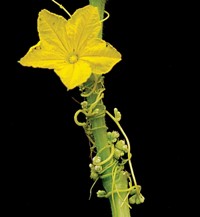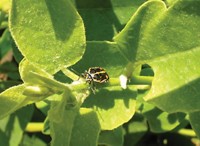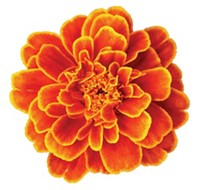Advertisement
Grab your lab coat. Let's get started
Welcome!
Welcome!
Create an account below to get 6 C&EN articles per month, receive newsletters and more - all free.
It seems this is your first time logging in online. Please enter the following information to continue.
As an ACS member you automatically get access to this site. All we need is few more details to create your reading experience.
Not you? Sign in with a different account.
Not you? Sign in with a different account.
ERROR 1
ERROR 1
ERROR 2
ERROR 2
ERROR 2
ERROR 2
ERROR 2
Password and Confirm password must match.
If you have an ACS member number, please enter it here so we can link this account to your membership. (optional)
ERROR 2
ACS values your privacy. By submitting your information, you are gaining access to C&EN and subscribing to our weekly newsletter. We use the information you provide to make your reading experience better, and we will never sell your data to third party members.
Biological Chemistry
Prey's Perfume
Parasitic plant relies on volatiles to track down suitable hosts
by Sarah Everts
October 2, 2006
| A version of this story appeared in
Volume 84, Issue 40

Sniffing for prey is not a skill one expects from a plant, but a parasitic vine called the five-angled dodder might beg to differ. Pennsylvania State University researchers have found that this predatory plant detects volatiles from other plants and then uses these chemical cues to assess the quality of a potential host before tracking the host down.


Although chemical ecologists have long studied the relationship between plant volatiles and animal predators, the new study provides the first proof that a plant host can attract or repel a plant predator through chemicals released into the air.
Listed on the USDA's top 10 weeds list, the five-angled dodder, Cuscuta pentagona, is an obligate parasite, which means it has no leaves and can't carry out photosynthesis particularly well. To survive, the dodder obtains essential energy and nutrients by attaching to other plants and sucking out their phloem, or innards.
But the five-angled dodder must work quickly. After germination, the plant has only a week of seed provisions to keep it alive while it finds an appropriate host. Justin B. Runyon, Mark C. Mescher, and Consuelo M. De Moraes of Penn State decided to find out how dodder beats the clock (Science 2006, 313, 1967).
To do so, the researchers monitored how dodder seedlings grew in the presence of live tomato plants as well as extracted tomato volatiles. They found that β-phellandrene and β-myrcene are potent attractants for the parasite. Next, the researchers studied dodder in the presence of wheat, a plant that dodder does not prey on.
They found that although wheat contains some attractants like β-myrcene, it also contains a potent repellant: (Z)-3-hexenyl acetate. This volatile is present in a lot of grasses, which are rarely colonized by dodder, De Moraes says. So dodder avoids unsuitable hosts by also detecting repellants.
"At first we figured that the volatiles may just be guiding the plant. We had no idea that the plant had a capacity to distinguish the quality of the host," De Moraes says.

"In previous experiments, either the plants were enclosed in a small container, where the volatiles reached artificially high concentrations, or the experiments were done completely in the open, which made the conditions of the experiments difficult to control," says Eran Pichersky, a biology professor at the University of Michigan. "The work opens up a new field for volatiles research as well as for the study of parasitic plants."
John Pickett of Rothamsted Research in England calls the experiments innovative. "This work could eventually yield new approaches for parasitic weed control in agriculture."






Join the conversation
Contact the reporter
Submit a Letter to the Editor for publication
Engage with us on Twitter